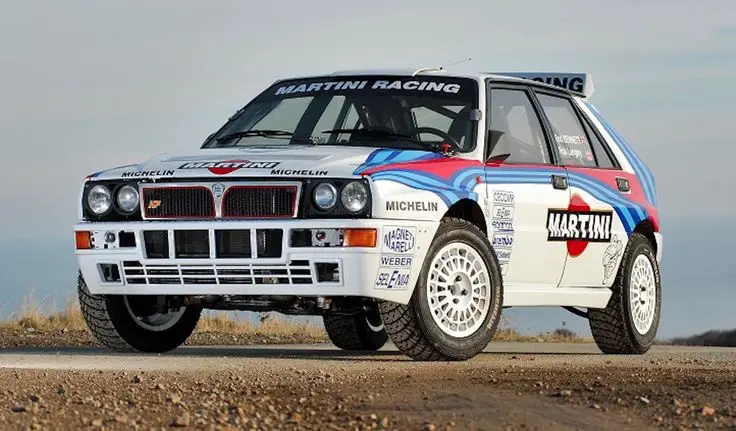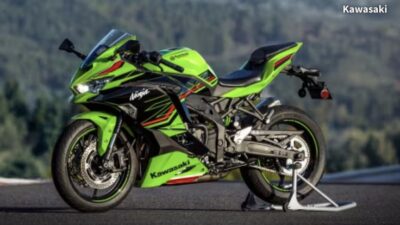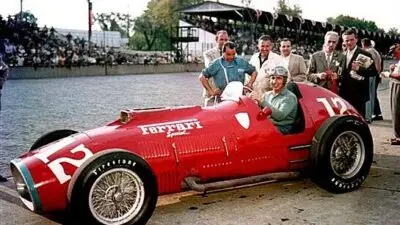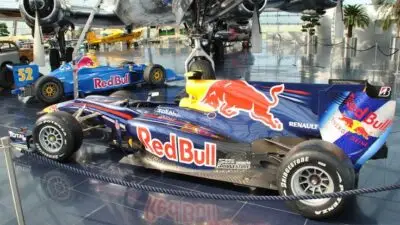The Lancia Delta Integrale stands as one of the most dominant forces in rally racing history. This Italian masterpiece transformed the World Rally Championship landscape during the late 1980s and early 1990s through its advanced four-wheel-drive system and turbocharged engine. The Lancia Delta HF Integrale won six consecutive World Rally Championship Constructor titles from 1987 to 1992, a record that remains unmatched in the sport.
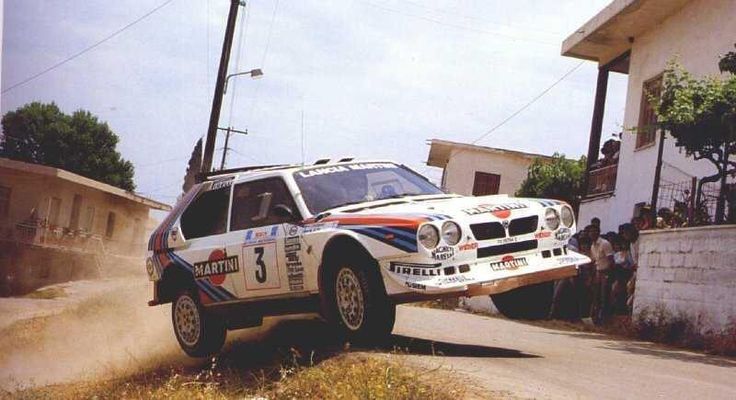
Built on the foundation of the earlier Delta S4, the Integrale represented Lancia’s transition from the wild Group B era to the more regulated Group A category. The car’s development focused on reliability and consistency rather than raw power. Engineers created a machine that could compete effectively across different rally surfaces while maintaining the speed needed to win championships.
The Delta Integrale’s success came from more than just engineering excellence. Lancia Martini Racing fielded multiple cars with world-class drivers like Juha Kankkunen and Miki Biasion. These drivers helped secure 46 WRC event wins and established the car’s reputation as a rally legend that continues to influence motorsport today.
Key Takeaways
- The Lancia Delta Integrale won six straight World Rally Championship Constructor titles from 1987-1992
- Advanced four-wheel-drive technology and turbocharged engines gave the car a competitive advantage across all rally surfaces
- The Delta Integrale’s success established engineering principles that continue to influence modern rally car design
Origins of the Lancia Delta Integrale in Rally Racing
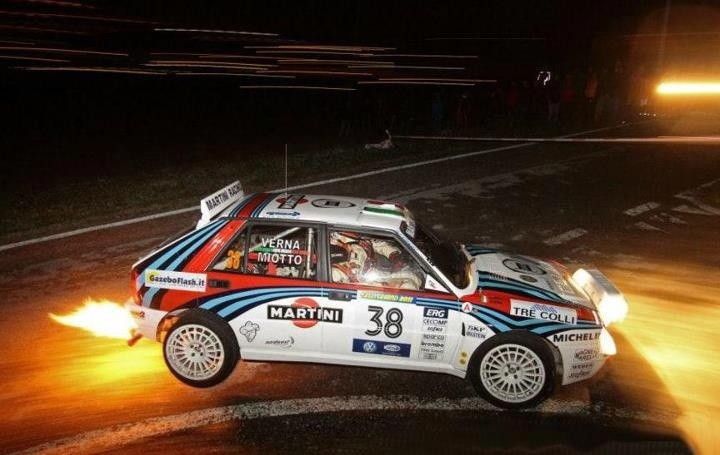
The Lancia Delta Integrale emerged from Lancia’s need to compete in Group A rallying after Group B was banned in 1987. The car evolved from the standard Delta hatchback through careful development work, with Fiat and Abarth providing crucial engineering support to transform a road car into a rally champion.
Development of the Lancia Delta
The Lancia Delta started as a regular compact hatchback before becoming a rally legend. Lancia needed a car that could work on both public roads and rally stages.
Engineers took the basic Delta body and added key rally features. They installed a turbocharged engine and four-wheel drive system. The car used a 2.0-liter engine that made good power for its size.
The Delta’s design worked well for rallying because it was light and strong. The compact size helped drivers handle tight turns on mountain roads. The body shape also cut through air efficiently at high speeds.
Key Development Features:
- Turbocharged 2.0L engine
- All-wheel drive system
- Lightweight construction
- Aerodynamic body shape
Transition from Group B to Group A
Group B rallying ended after the 1986 season due to safety concerns. The demise of Group B left Lancia in a difficult position since they had focused on the Delta S4 Group B car.
The FIA created Group A rules that required cars to be based on production models. Teams had to build at least 5,000 road cars to qualify for racing.
Lancia quickly adapted their Delta for Group A competition. The company fitted a 1995cc turbocharged engine producing 258 hp and added four-wheel drive. They painted it in Martini colors and sent it to the Monte Carlo rally.
The car won its first rally in 1987. Nine wins were taken in 1987, crowning Juha Kankkunen champion and taking the manufacturers title.
Role of Fiat and Abarth in the Delta’s Evolution
Fiat owned Lancia and provided resources for the rally program. The parent company gave engineers access to advanced technology and funding.
Abarth, Fiat’s performance division, helped develop the Delta’s engine and suspension systems. They had experience building race cars and knew how to make reliable power.
The partnership allowed Lancia to compete against larger manufacturers like Toyota and Ford. Fiat’s backing meant the team could afford the best drivers and mechanics.
Fiat Group Contributions:
- Financial support for development
- Access to advanced engineering
- Manufacturing capabilities
- Racing expertise from Abarth
The collaboration created a car that dominated rallying for years. The Lancia Delta Integrale won six World Rally Championships in a row, making it the most successful rally car ever built.
Technical Innovations and Features
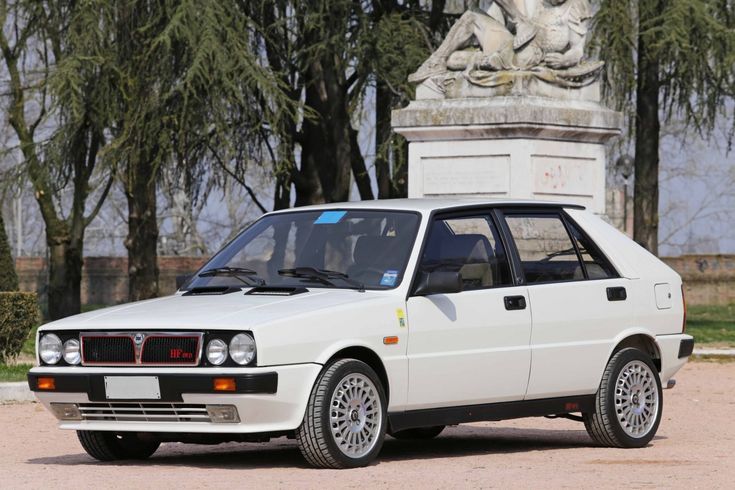
The Lancia Delta HF Integrale combined advanced all-wheel drive technology with turbocharged power to create a dominant rally machine. Key innovations included sophisticated differential systems, lightweight chassis construction, and continuous model evolution that maintained competitive advantage throughout its racing career.
All-Wheel Drive System
The Lancia Delta HF 4WD introduced Lancia’s sophisticated four-wheel drive system in 1987. This system transferred power to all four wheels through a center differential that could vary torque distribution based on driving conditions.
The all-wheel drive setup used a Torsen differential in the center to manage power between front and rear axles. This mechanical system automatically adjusted torque split without electronic intervention, providing reliable performance in varying rally conditions.
Front and rear limited-slip differentials completed the drivetrain package. These components worked together to maximize traction on loose surfaces while maintaining stability on tarmac stages.
The system proved highly effective in rally competition. It allowed drivers to maintain speed through corners while providing excellent acceleration out of turns on both gravel and asphalt surfaces.
Turbocharging and Engine Design
The Lancia Delta HF Integrale used a turbocharged 2.0-liter four-cylinder engine that produced approximately 200 horsepower in road trim. Rally versions generated significantly more power, often exceeding 300 horsepower.
Fiat provided the base engine architecture, which Lancia modified extensively for rally use. The turbocharger system included an intercooler to reduce intake air temperatures and increase power output.
The engine featured a robust internal design to handle the stresses of rally competition. Strengthened pistons, connecting rods, and crankshaft components allowed the powerplant to survive demanding race conditions.
Fuel injection systems replaced carburetors to provide precise fuel delivery. This technology improved throttle response and allowed for more accurate tuning across different altitude and temperature conditions encountered in world rally events.
Chassis, Suspension, and Differential
Giorgetto Giugiaro designed the original Delta body shell, which provided an excellent foundation for rally modifications. The chassis received significant strengthening through additional bracing and roll cage integration.
The suspension system used MacPherson struts at all four corners. Rally versions featured adjustable dampers and springs that could be tuned for specific stage conditions and surface types.
| Component | Front | Rear |
|---|---|---|
| Suspension | MacPherson struts | MacPherson struts |
| Track width | 1488-1566mm | 1458-1526mm |
| Wheel size | Up to 17 inches | Up to 17 inches |
Extended wheel arches accommodated wider tracks and larger wheels, with the final HF Integrale featuring 70mm wider bodywork. This modification improved stability and allowed for better brake cooling during competition.
The differential systems included front, center, and rear units that could be adjusted for different rally conditions. Teams could modify locking characteristics to suit specific stages and driver preferences.
Evolution of the Integrale Models
The Lancia Delta HF Integrale 16V appeared in 1989 with a 16-valve cylinder head that increased power output. This version maintained the proven all-wheel drive system while improving engine breathing and performance.
The evolution progressed through several variants from 1987 to 1992, with each iteration receiving updates to bodywork, suspension, and drivetrain components. The HF 4WD won 11 WRC events, followed by the Integrale with 14 victories.
The final HF Integrale in 1992 featured the most extensive modifications. Weight increased to 1200kg minimum, while aerodynamic improvements and wider tracks enhanced performance on both gravel and tarmac stages.
Each model retained core technical elements while incorporating lessons learned from competition. This continuous development approach allowed Lancia to maintain competitiveness throughout the Group A era of world rallying.
Competition Success in the World Rally Championship
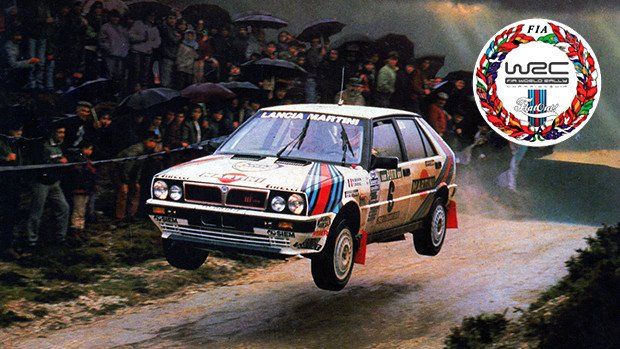
The Lancia Delta Integrale achieved unprecedented success in the World Rally Championship, winning 46 WRC events and securing six consecutive manufacturers’ titles from 1987 to 1992. Italian drivers like Miki Biasion claimed world championships while the car dominated events from Monte Carlo to Safari Rally across multiple racing categories.
Dominance from 1987 to 1992
The Delta HF 4WD won on its debut at the 1987 Monte Carlo Rally, launching six years of championship dominance. Lancia secured the 1987 World Rally Championship manufacturers’ title in the car’s first season.
The team’s performance was remarkable throughout this period. Lancia went 12 months and 12 rallies without losing in 1988, demonstrating the car’s superiority across different surfaces and conditions.
Championship Results by Year:
- 1987-1992: Six consecutive WRC manufacturers’ titles
- Total victories: 46 WRC event wins across all Delta Integrale variants
- Success rate: Dominated rallying for six straight seasons
The car evolved through multiple versions during this period. Each variant maintained competitive advantage while adapting to changing regulations and technical requirements.
Historic Victories and Milestone Events
The Delta Integrale achieved victory at every major world championship rallies venue. The car excelled on tarmac events like Tour de Corse and Monte Carlo Rally while proving equally capable on gravel stages.
Notable achievements included wins at challenging events like the Safari Rally in Kenya. The car’s versatility allowed it to compete successfully across different climates and road surfaces worldwide.
Didier Auriol set a then-record six wins in the 1992 season, showcasing the final evolution’s peak performance. The Rallye de Portugal also fell to Delta drivers multiple times during the championship run.
Key Event Victories:
- First-time-out wins at major rallies
- Success across all surface types
- Record-setting individual season performances
- Consistent podium finishes throughout the era
Key Drivers and Teams
Miki Biasion became the first Italian to win a rally champion title in 1988, driving the Delta Integrale. He repeated this achievement in 1989, cementing his place in rallying history.
Other championship-winning drivers included Juha Kankkunen and Didier Auriol. These drivers were considered the best of the best during the Delta era.
The Jolly Club took over operations in 1992 after Lancia’s official withdrawal. Despite reduced factory support, the team continued winning with Abarth technical assistance.
Championship Drivers:
- Miki Biasion: 1988, 1989 WRC titles
- Juha Kankkunen: Multiple championship wins
- Didier Auriol: Record-setting 1992 season
Additional successful drivers included Markku Alen, Bruno Saby, and Andrea Aghini. Each contributed to the car’s remarkable victory tally.
Group N and Production Class Achievements
The Delta Integrale competed successfully in Group N production-based categories alongside its Group A championship campaigns. These achievements demonstrated the car’s capabilities in less modified form.
Production-based racing allowed more privateers to compete with Delta variants. The car’s inherent strengths translated well to these regulations with minimal modifications required.
Greg Carr won the 1989 Australian Rally Championship in an ex-works Delta HF 4WD, showing international success beyond European events. This victory highlighted the car’s global competitive potential.
The production class success helped establish the Delta’s reputation among amateur racers. Many continued competing in national championships long after the factory team’s withdrawal from the WRC.
Notable Models and Racing Variants
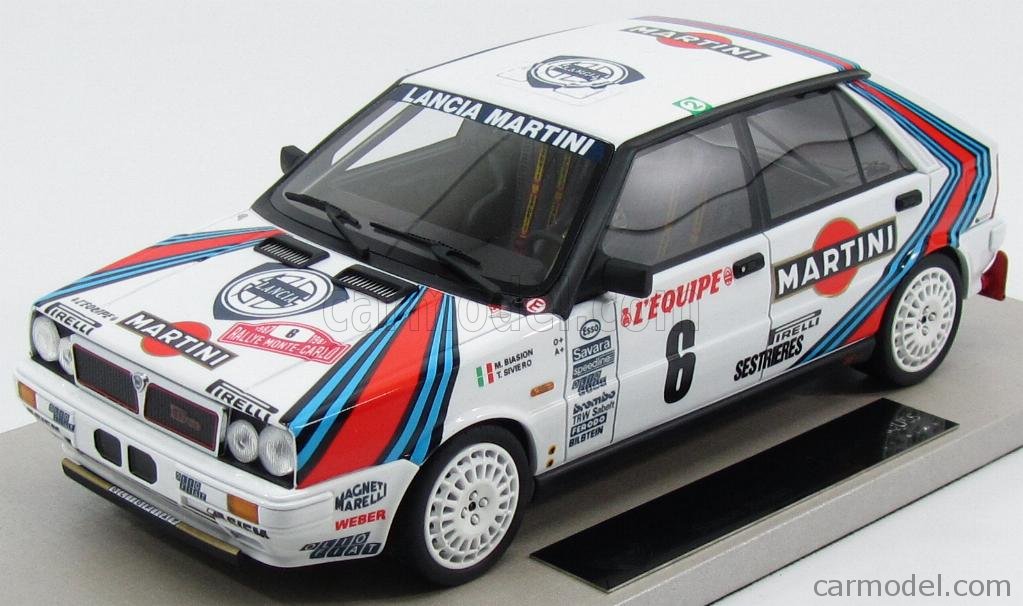
The Lancia Delta’s rally success came through three main variants that dominated different eras of competition. The HF 4WD made its victorious debut at the 1987 Monte Carlo Rally, while the Integrale Evolution refined the formula and the fearsome S4 represented Group B’s ultimate expression.
Lancia Delta HF 4WD
The Delta HF 4WD launched Lancia’s Group A dominance in 1987. This model featured a turbocharged 2.0-liter engine producing around 250 horsepower in rally trim.
The car used a sophisticated four-wheel-drive system with a center differential. Drivers could adjust power distribution between front and rear wheels during stages.
The HF 4WD won its first World Rally Championship in 1987, beginning an unprecedented six-year streak. The model secured victories with drivers like Juha Kankkunen and Miki Biasion.
Key technical features included wishbone suspension front and rear. The rear setup used twin dampers to improve handling balance during high-speed rallying.
The HF 4WD’s immediate success proved Lancia’s Group A concept worked perfectly. It combined the reliability needed for long rally stages with enough speed to win championships.
Lancia Delta HF Integrale Evolution
The Integrale Evolution appeared in 1991 as Lancia’s final factory rally development. This version included significant upgrades over the original HF 4WD model.
Engine improvements included a new ignition system for better power delivery. The Evolution also featured a stronger steering rack to handle increased loads.
Suspension changes included reworked damping and geometry. Larger wheels provided better tire contact and improved braking performance.
The Evolution continued Lancia’s rally dominance under privateer team Jolly Club after the factory withdrew. Notable drivers included Carlos Sainz and Didier Auriol.
Key Evolution specifications:
- Engine: 2.0L turbocharged four-cylinder
- Power: Approximately 300hp in rally spec
- Drive: All-wheel drive with adjustable center diff
- Transmission: Five-speed manual
The Evolution represented the peak of Group A rally car development. It combined years of racing experience with advanced engineering solutions.
Lancia Delta S4 in Group B
The Delta S4 stood as Group B’s most extreme rally car before the category’s 1986 ban. This machine featured both supercharging and turbocharging on its 1.7-liter engine.
The S4 produced around 500 horsepower and redefined acceleration in rally cars. Its unique dual-charging system provided power across the entire rev range.
Unlike other Group B cars, the S4 used a lightweight tubular spaceframe chassis. The mid-mounted engine gave better weight distribution than front-engined rivals like the Audi Quattro.
Henri Toivonen mastered the S4 better than any other driver. His tragic death in the 1986 Tour de Corse led directly to Group B’s elimination.
The S4’s brief career included a dominant debut at the 1985 RAC Rally. Toivonen and teammate achieved a convincing one-two finish against established competitors.
S4 technical highlights:
- Supercharger for low-end torque
- Turbocharger for high-rpm power
- Mid-engine layout for better balance
- Tubular spaceframe construction
The S4’s legacy influenced the later Group A cars’ development. Many lessons learned carried forward to the HF 4WD and Evolution models.
Impact on Rally Car Engineering and Motorsport
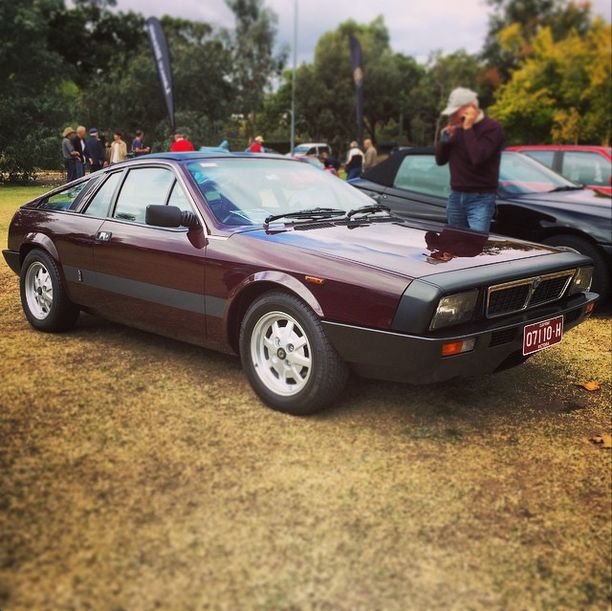
The Delta Integrale revolutionized rally car development through advanced all-wheel drive systems and turbocharged engine technology. Its engineering breakthroughs shaped FIA Group A regulations and continue to influence modern motorsport design principles decades later.
Technological Influence on Future Rally Cars
The Delta Integrale introduced key technologies that became standard in rally car development. Its sophisticated all-wheel drive system distributed power effectively across all four wheels, providing superior traction on varied surfaces.
The car’s 2.0-liter turbocharged engine delivered reliable power while meeting Group A displacement restrictions. This combination of turbocharger efficiency and four-wheel drive became the blueprint for future rally cars.
Key technological innovations included:
- Advanced torque vectoring systems
- Lightweight aluminum components
- Improved aerodynamic body panels
- Electronic differential controls
Manufacturers like Subaru and Mitsubishi adopted similar all-wheel drive configurations for their rally programs. The Integrale’s success proved that turbocharged four-cylinder engines could compete against larger displacement naturally aspirated motors.
Modern rally cars still use the fundamental engineering principles pioneered by the Delta HF Integrale series. The car’s influence extends beyond rallying into road car development, where all-wheel drive systems became increasingly common.
Contributions to Group A Regulations
The FIA developed Group A regulations partly in response to the Delta Integrale’s competitive advantages. These rules required closer relationships between production cars and their racing counterparts.
Lancia’s engineering team worked within Group A constraints to maximize performance. They demonstrated how manufacturers could create effective rally cars while maintaining production car foundations.
Group A regulation impacts:
- Minimum production numbers increased
- Engine modification limits tightened
- Body panel specifications standardized
- Safety equipment requirements expanded
The Delta Integrale’s success forced competitors to invest heavily in homologation specials. Manufacturers created limited production models specifically to meet Group A requirements and remain competitive.
FIA officials used the Integrale’s dominance as a case study for future regulation development. The car’s six consecutive championship victories highlighted both the strengths and potential issues with Group A rules.
Legacy in Modern Motorsport
Contemporary rally cars retain many design elements pioneered by the Delta Integrale. All-wheel drive systems remain mandatory in top-level rallying, following the precedent set by Lancia’s engineering team.
Modern World Rally Championship cars use similar power delivery methods. Turbocharged engines with advanced engine management systems trace their development back to 1980s Group A technology.
Modern motorsport influences:
- Electronic stability systems
- Carbon fiber body panels
- Advanced suspension geometry
- Data acquisition systems
The Integrale’s impact extends beyond rallying into circuit racing and road car development. Its engineering solutions influenced everything from production car all-wheel drive systems to turbocharger applications.
Rally teams continue studying the Delta Integrale’s setup and development methods. The car remains a benchmark for rally engineering excellence and competitive success across different racing conditions.
Cultural Significance and Enduring Legacy
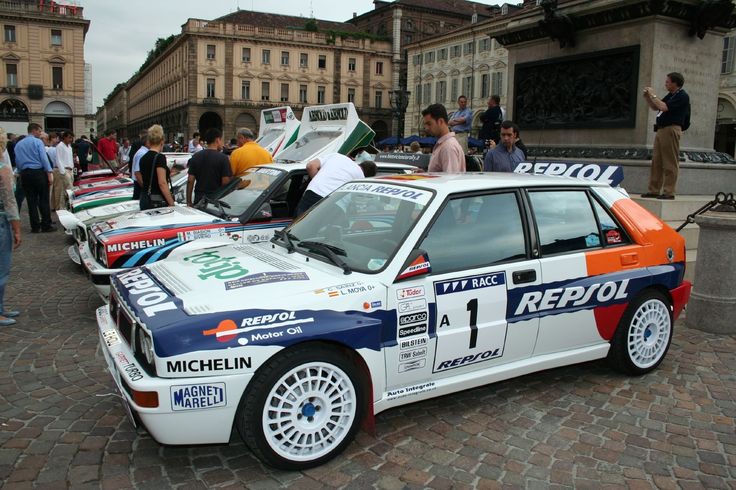
The Lancia Delta Integrale transformed from a rally champion into a cultural icon that captivates collectors worldwide. Its legendary WRC dominance continues to attract enthusiasts to historic rally events where these Italian machines still compete.
Popularity Among Collectors and Enthusiasts
The Delta Integrale became a cultural symbol among car enthusiasts, representing the golden era of rally racing. Collectors prize these vehicles for their racing heritage and limited production numbers.
Lancia produced only 47,787 total units across all Integrale variants. The rarest Evoluzione II models numbered just 4,223 cars, making them highly sought after by collectors.
Production Numbers by Model:
- Delta 4WD (1986-1987): 7,665 units
- Integrale 8V/16V (1988-1991): 23,004 units
- Evoluzione I (1991-1993): 5,619 units
- Evoluzione II (1993-1994): 4,223 units
The Lancia Delta HF Integrale’s rally champion status drives collector interest. Values continue rising as enthusiasts recognize the car’s motorsport significance.
Original factory specifications command premium prices. Collectors prefer unmodified examples with documented service histories and matching numbers.
Presence in Historic and Modern Rally Events
The Delta Integrale maintains an active presence in historic rally competitions worldwide. These events celebrate the car’s WRC championship legacy from 1987 to 1992.
Historic rally series feature dedicated Integrale classes. Owners compete in events like the Monte Carlo Historic Rally and Rallye Sanremo Storico.
The car’s robust engineering allows continued competition decades after production ended. Many examples still compete using period-correct specifications and components.
Modern Rally Participation:
- Historic championship events
- Club-level competitions
- Demonstration runs at major rallies
- Vintage racing festivals
Rally schools use Integrale models to teach classic all-wheel-drive techniques. The car’s predictable handling characteristics make it ideal for instruction purposes.
Contemporary rally drivers respect the Delta’s pioneering role in four-wheel-drive rally technology. Its influence appears in modern WRC car development and design philosophy.
Frequently Asked Questions
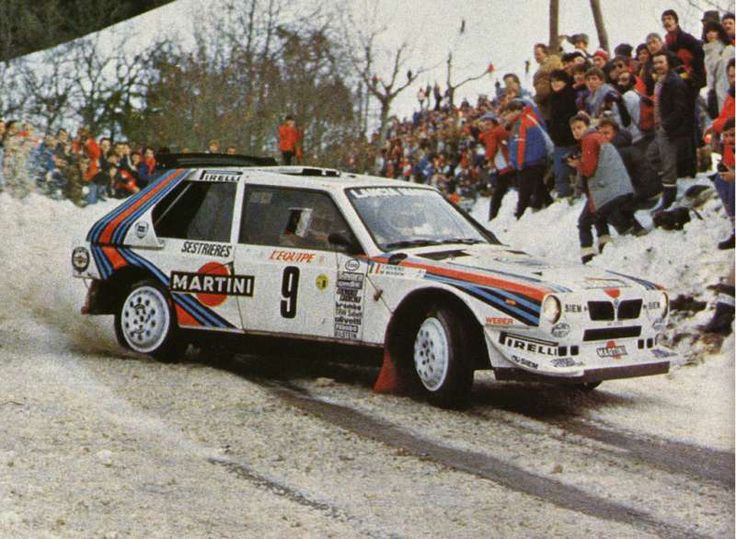
The Lancia Delta Integrale dominated World Rally Championship competition from 1987 to 1992, winning six consecutive manufacturers’ titles and 46 individual rally victories. Its technological innovations and evolutionary development transformed Group A rally racing during this era.
What were the key successes of the Lancia Delta HF Integrale in rally championships?
The Lancia Delta achieved 50 World Rally Championship victories across all its variations, making it arguably the most successful rally car in history. The Delta Integrale models specifically claimed 46 individual rally wins and 6 manufacturer championships by the time production ended in 1994.
Lancia secured six consecutive WRC manufacturers’ titles from 1987 to 1992. This unprecedented streak established a record that demonstrated the car’s consistent dominance throughout the Group A era.
The different Delta variants achieved specific win totals during their competition years. The HF 4WD won 11 occasions, the Integrale took 14 WRC wins, the Integrale 16V claimed 13 wins, and the final HF Integrale earned eight wins.
Three drivers won World Drivers’ Championships behind the wheel of Delta Integrales. Miki Biasion, Juha Kankkunen, and Didier Auriol all captured titles in the Italian machine.
How does the performance of Lancia Delta Integrale compare to its contemporaries in rally racing?
The Delta Integrale outperformed its Group A rivals through superior engineering and development. While competitors like the Mazda 323 existed, the 1995cc Garrett turbocharged engine made the Delta more suitable for Group A competition than its rivals.
Didier Auriol set a record in 1992 by winning six rallies in a single season with the Delta HF Integrale. This achievement surpassed previous single-season win records and demonstrated the car’s superiority over contemporary machines.
The Delta’s dominance extended across different surfaces and conditions. It won events on tarmac, gravel, and snow, proving its versatility compared to rivals that often excelled on specific terrain types.
Even when competing under handicapped conditions, the Delta maintained its edge. The car won Rally Australia in 1992 using the heavier 1993 minimum weight of 1200kg, showcasing performance advantages over lighter competitors.
What technological innovations did the Lancia Delta Integrale bring to rally racing?
The Delta Integrale transferred key technologies from the Delta S4 Group B car, namely four-wheel drive and turbocharging, into the Group A ruleset. This combination provided exceptional traction and power delivery for rally conditions.
The car featured a front-transverse mounted turbocharged inline-4 engine producing over 300 horsepower. This configuration optimized weight distribution while delivering substantial power output for its displacement.
Advanced suspension systems distinguished the Delta from competitors. The car used McPherson struts front and rear with increased suspension travel that improved handling characteristics across varied terrain.
A six-speed transmission with four-wheel drive provided precise gear selection and optimal power distribution. This drivetrain configuration allowed drivers to maximize the turbocharged engine’s performance across different rally stages.
Can you highlight the evolution of the Lancia Delta Integrale models used in rally competitions?
The Delta evolution began in 1987 with the HF 4WD model following the end of Group B regulations. This initial version established the foundation for future developments while adapting Group B technologies to Group A requirements.
The Integrale arrived in 1988 as the second evolution, featuring refinements that led to 14 WRC victories. This model built upon the HF 4WD’s success with improved aerodynamics and handling characteristics.
The Integrale 16V appeared in 1989 with enhanced engine technology and valve configuration. This version captured 13 rally wins through improved power delivery and engine efficiency.
The final HF Integrale emerged in 1992 with the most aggressive bodywork modifications. Wheel arches extended by 70mm to 1770mm width, larger 17-inch wheels for improved brake cooling, and widened front and rear track dimensions characterized this ultimate evolution.
What is the historical significance of the Lancia Delta Integrale in the context of rally racing?
The Delta Integrale defined the Group A era of rally racing from 1987 to 1992. Its six consecutive manufacturers’ championships created a period often called “The Delta Years,” similar to Ferrari’s dominance in Formula 1.
The car bridged the gap between the exotic Group B machines and more production-based Group A regulations. It maintained supercar performance levels while adhering to stricter homologation requirements.
Lancia’s withdrawal from official competition at the end of 1991 marked a significant moment in rally history. The 1992 season saw the Jolly Club run the team with Abarth support, representing the end of Lancia’s factory involvement.
The Delta’s success contributed to Lancia’s total of 11 manufacturer titles and four drivers’ titles from 46 WRC event wins across their entire rally program, establishing the Italian brand as the most successful in WRC history.
How has the legacy of the Lancia Delta Integrale influenced modern rally cars?
The Delta Integrale established the template for modern rally car development through its integration of turbocharging and all-wheel drive systems. These technologies became standard features in subsequent World Rally Car regulations.
Its approach to aerodynamic optimization and wide-
